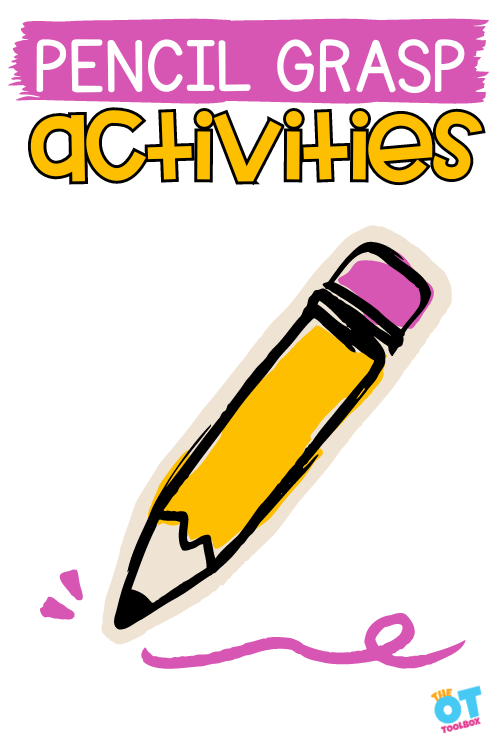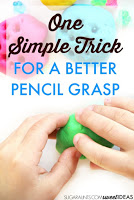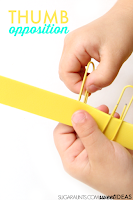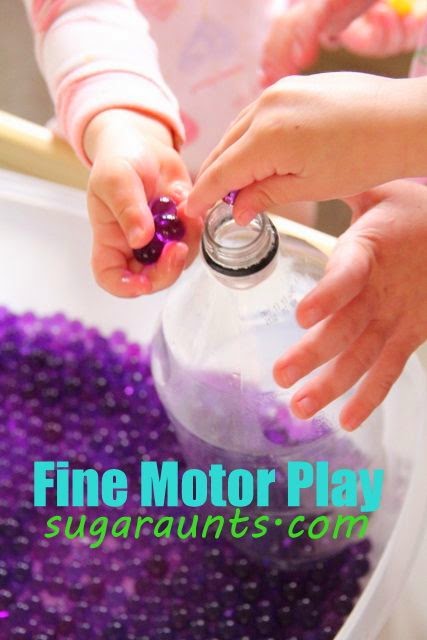Moving the pencil within the tips of the fingers to switch from writing to erasing.
Passing small beads from the palm of the hand to the finger tips.
Holding a stack of coins in the palm while counting out the amount needed to pay for an item.
These are all in-hand manipulation tasks, and can be a problem when it comes to performing functional tasks related to these fine motor tasks. Sometimes a child appears clumsy with their small motor movements. They use two hands for tasks that normally require just one. Today, I’ve got a fun way to help with these difficulties by working on in-hand manipulation skills using coins.
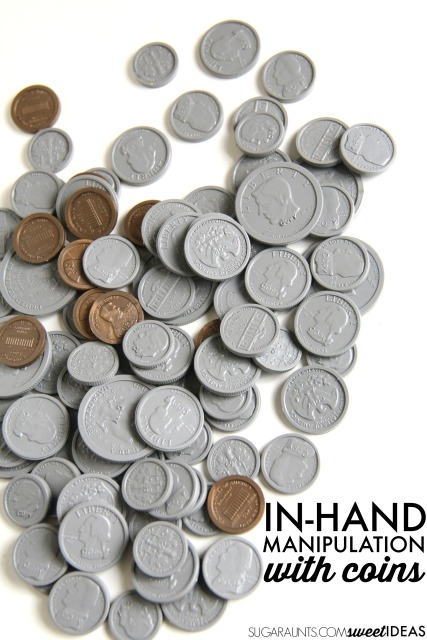
This post contains affiliate links.
The Three types on In-hand Manipulation
There are three types or components of in-hand manipulation.
Translation is using your fingers to moving a little item from your palm to your finger tips (or your fingertips to squirrel the item into the palm). When you hold a coin in your palm and manipulate it to your finger tips to push it into a piggy bank or vending machine, you are demonstrating palm-to-finger translation.
Shift is moving an object using the pads of your fingers…adjusting the pencil grip is demonstrating finger shift. Another example might be manipulating a button or a zipper with the finger tips.
Rotation is rolling an object using the fingertips. Examples of rotation are rolling a pencil in your fingertips, turning a pencil over to use the eraser, or opening a bottle top by rotating the lid on your finger tips.
These fine motor skills are needed for functional tasks like managing a pencil or crayon during handwriting, opening containers, managing coins or small items, manipulating a spoon/knife/fork, adjusting the paper when cutting with scissors, and fastening buttons or shoe laces.
How to use coins to work on in-hand manipulation:
- Rotate the coins between the pads of the thumb and pointer finger/middle finger.
- Grab a handful of coins and place them into a slotted container.
- Pick up coins one at a time and “squirrel away” into the palm.
- Push coins into a piggy bank or slotted lid (Slice a hole in a recycled plastic container like a yogurt container)
- Slice a slit in a piece of cardboard like we did below. Using a small piece of cardboard allows you to hold the cardboard when pushing the coin through the slot. Read on:
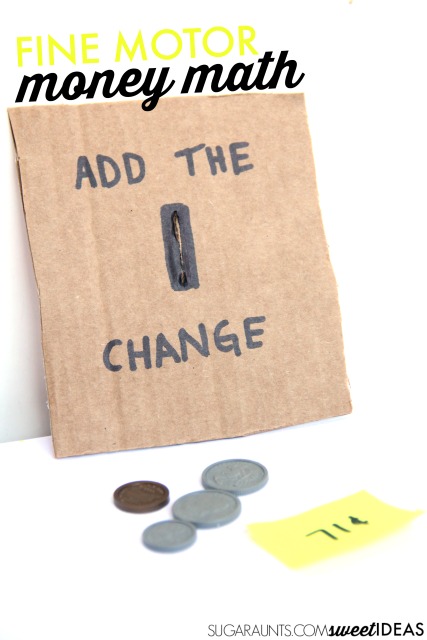
In-Hand Manipulation Activity with Coins
I grabbed a piece of cardboard from a pizza box lid. Cut the cardboard into a manageable sized rectangle and use a sharp knife to cut a slit. Make sure the slit is vertical as this is similar to a coin machine and encourages efficient positioning of the wrist and fingers for functional use.
To work on in-hand manipulation needed for functional tasks, use play money to press the money through the slot. Ask your child to grab up a handful of the coins and push them through the slot one at a time. Using the non-dominant hand to hold the cardboard is an exercise in bilateral hand coordination, making this a great pre-handwriting exercise. (Use this activity as a writing warm-up exercise!)
When a person writes, they need to hold the paper steady with their non-dominant hand while manipulating the pencil with only their dominant hand. They need to adjust the pencil motions, twirl it around to erase, pinch and “crawl” up the pencil to adjust small movements in the hand as they write on the paper. Holding the cardboard in the non-dominant hand prevents the child from managing the money with both hands.
While pressing the coins into the cardboard, work on money and change making skills like we shared here.
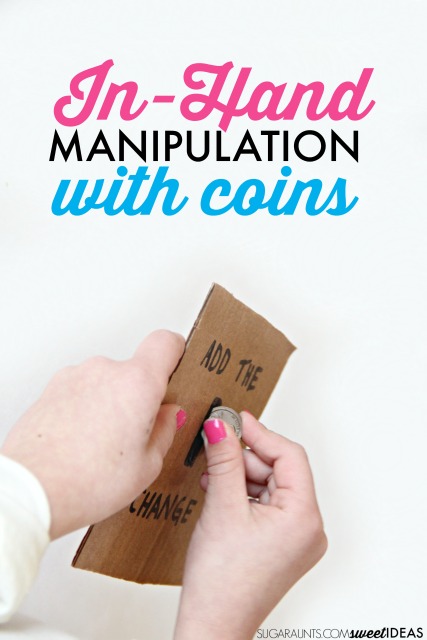

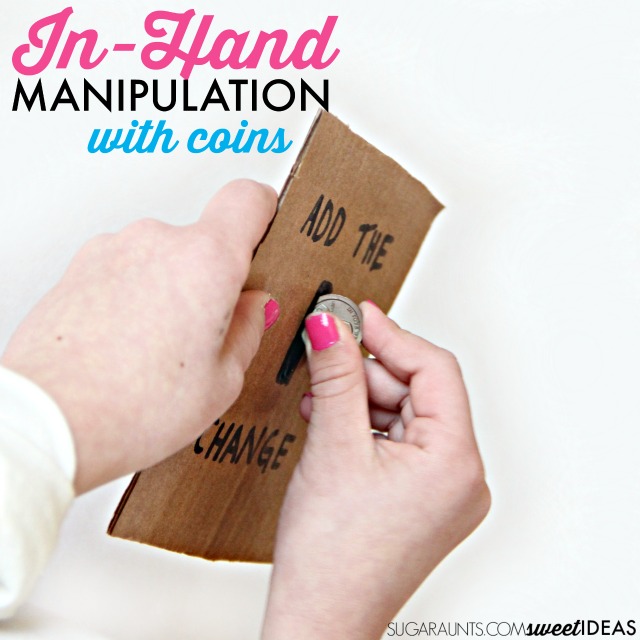
Love this idea? Share it on Pinterest!
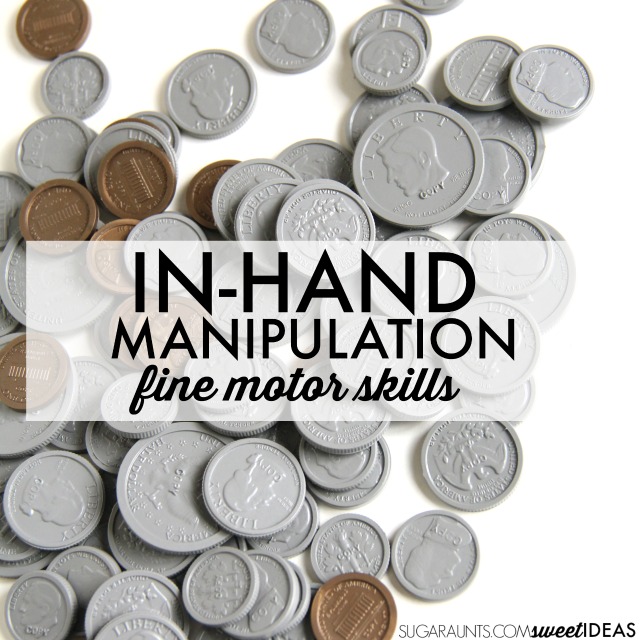
Tell your friends! Share it on Facebook!
More Fine Motor activities you will LOVE for working on handwriting, pencil grasp, and manipulating small items:

